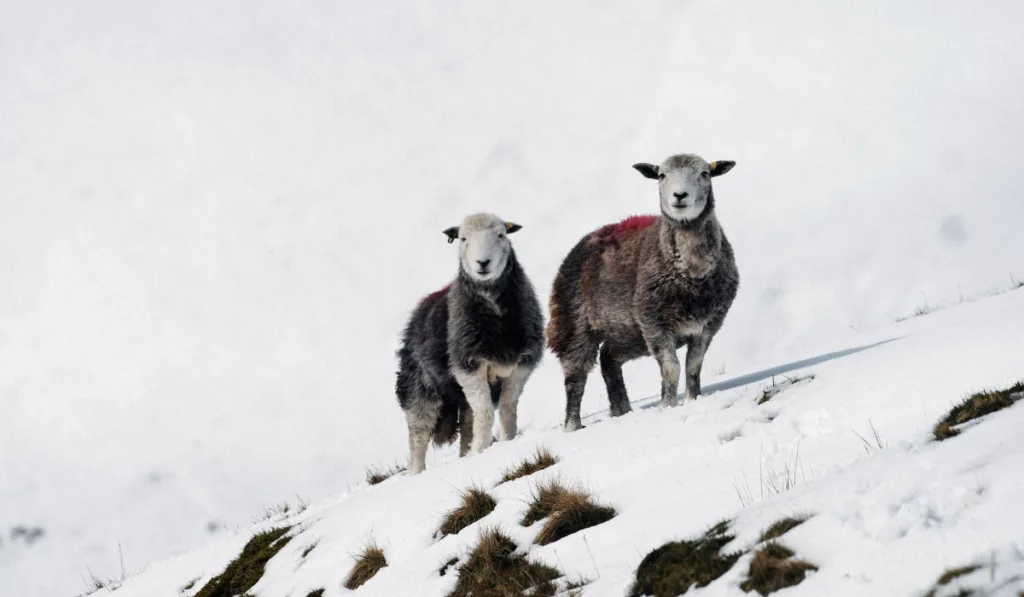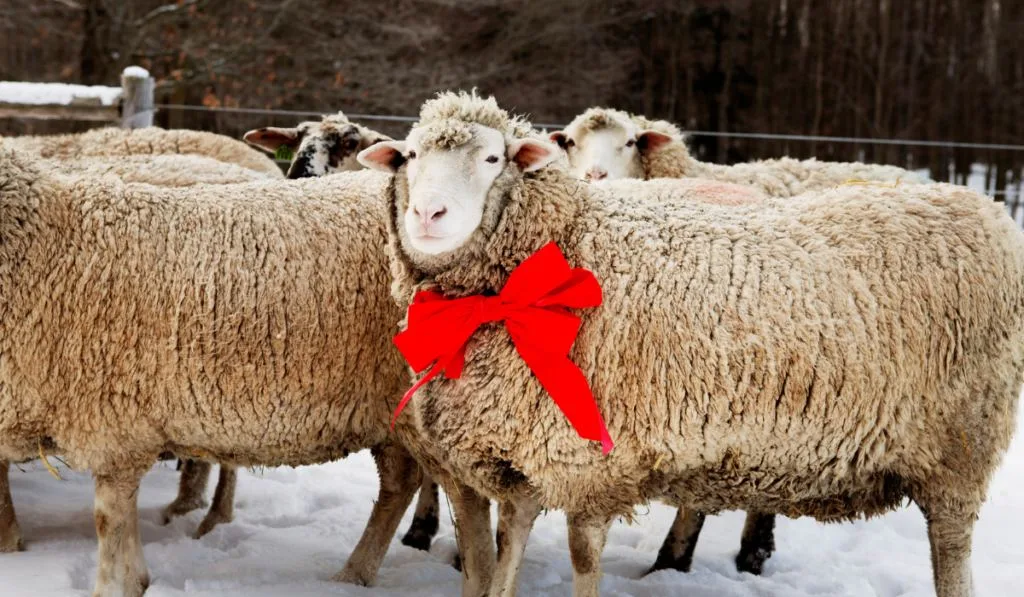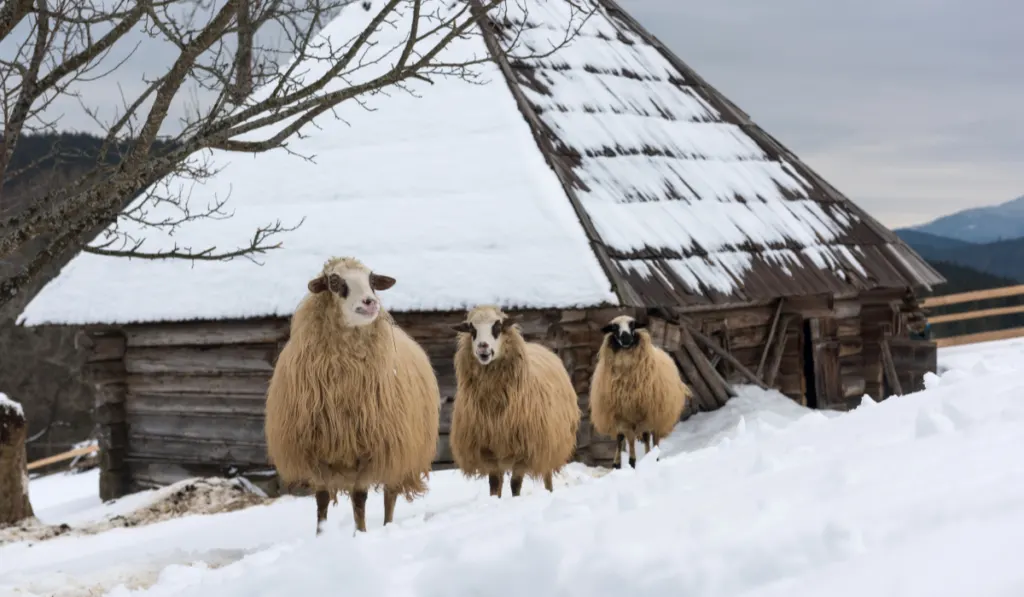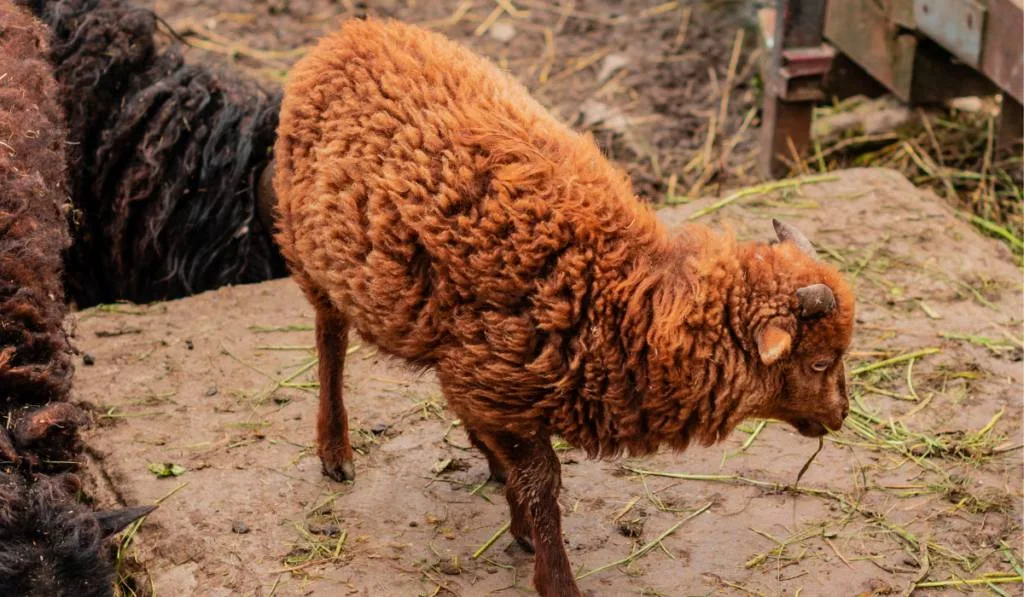Table of Contents
Sheep do not commonly freeze to death.
Much like any animal or person, extreme temperatures may cause severe illness and even lead to death. However, sheep have thick coats of wool that help protect them from the extreme cold by keeping their body temperature regulated. Common temperature related illnesses that sheep may face include:
Hypothermia: This is an intense and fast drop in body temperature, shutting down the body’s organs.
Frostbite: Exposure during extremely cold weather can lead to a lack of function in the limbs, commonly legs and arms.

Can sheep sleep outside in the cold?
Sheep may sleep outside in the cold but it is not recommended. All animals should have a shelter structure to protect them from extreme temperatures, storms, and winds.
Sheep commonly sleep outside when kept as pets or livestock. These animals have hefty fat reserves and heavy wool that reduce the impact of extreme temperatures and keeps them warm.
However, keeping these animals indoors or in a shelter is the best solution to keep them warm and prevent illnesses from occurring due to cold temperature exposure. The shelter may be anything from an inside stable with a heating system (similar to a house), to a barn or a shed that is suitable for animals and traps enough heat for them to be comfortable.
How to tell if your sheep are too cold
When your sheep are too cold, they will typically start to show warning signs. These are symptoms that can tell the owner they need help either from a veterinarian or just need to be warmed up. Depending on the severity of the symptoms and the temperature, these symptoms include:
- Limping while walking
- Little to no movement
- Hunched up (almost in a ball form)
- Having very cold ears and mouth
These are common signs that your sheep are experiencing cold temperatures that they may not be able to handle. Sheep are most comfortable between 45-70°F. Lower or higher temperatures may cause them some discomfort, but with shelter, hydration, and good health they will adjust their activity levels accordingly. If you notice any of the signs above during extreme weather, consult a veterinarian immediately. Otherwise, try to do the following to warm them up and regulate their body temperature:

- Wrap them in large towels/ blankets
- Immediately bring them into a shelter with a temperature above 45°F
- Hydrate them with water
- Tube feed them (if needed) to ensure nutrients and energy
- Wrapping their feet in heated cloths or towels or submerging them in warm water may help to elevate their body temperature
Should you change their diet when it’s too cold out?
Sheep thrive on a varied diet under normal conditions. During extreme temperatures, their nutritional requirements will increase as more energy is used trying to stay warm. This varies depending on the age, gender, and health of the sheep itself. Healthy sheep should regularly consume a diet consisting of fibrous products such as hay, and grass, supplemented with various vegetables or corn.
When winter comes or during cold times, sheep may enjoy a more variety-filled diet that may include an increase in the amount of food. This may be something as simple as extra hay.
This extra amount allows for the sheep to utilize more energy staying warm, while still maintaining the regular nutrient intake needed to sustain them normally.
Overall, a sheep doesn’t need an extreme diet change during the winter, but an increase in the amount is recommended.
Types of bedding options during cold weather
Providing for your sheep includes knowing the right materials to use to ensure optimum health and happiness. Below are the various types of bedding options that may be used to protect sheep from harsh temperatures and climates. These can be stored and put anywhere from indoors to outdoors:
- Thin layers of wood chips
- Thin layers of peanut hulls
- Newsprint- thick to a thin layer of newsprint or shredded paper
- Corn Stalks- a thin layer
Breeds of sheep that do well in cold weather
Katahdin
The Katahdin sheep originates in Maine and is commonly found across the United States today. These sheep are commonly a deep brown or white and may vary in patterns. They vary in size and weight depending on gender and age. This breed may weigh anywhere between 180-250 pounds and may have an average lifespan of 10-12 years.
Katahdin sheep can withstand colder temperatures than some other breeds. They are a better choice for colder states and are able to adapt well.

Black Welsh Mountain
The Black Welsh Mountain sheep originated in Britain as an offshoot of the original Welsh mountain breed, which was white. However, as the name suggests, this sheep is primarily black. This sheep is known to weigh around 100-120 pounds depending on age, gender, and health. These sheep may have a lifespan of around 8-10 years.
These sheep are raised specially for their wool. Black Welsh Mountain sheep adapt well to low temperatures.
Shetland
The Shetland sheep originated in Scotland. Known for their broad body of wool and short tails, these sheep may come in a variety of colors including white, light brown, red, and black. The average weight is 90-120 pounds, depending on age, gender, and nutrition. They have an average lifespan of 10-20 years.
Tunis
The Tunis sheep originated in Tunisia, hence its name. It is believed to be a descendant of the fat-tailed sheep and is now found around the world. These sheep may weigh anywhere between 25 to 50 pounds and are one of the lower-weight breeds. They have an average lifespan of 8-10 years.
Tunis sheep are commonly known for their wool production and are usually bright white to light brown in color, with the potential to be a darker brown and even black.

California Red
The California Red sheep originated in California. It is now found across the United States. This breed is known for its production of wool, which may be reddish in color, ranging to white and darker browns. Weighing around 180-200 pounds, it is a heavier set breed of sheep. They have an average lifespan of around 10-12 years.
Important note:
This information is not a suitable replacement for medical attention. If you believe your sheep has developed any type of illness or has been displaying strange, abnormal behavior it is very important to call your veterinarian right away to prevent/treat any potential illness!
Resources
- https://u.osu.edu/sheep/2018/01/30/do-sheep-and-goats-get-cold/
- https://www.canr.msu.edu/news/preparing_goats_and_sheep_for_winter_weather
- https://www.agupdate.com/farmandranchguide/news/livestock/cold-weather-101-help-lambs-beat-the-winter-chill
- https://www.wrightsfeeds.ca/lamb-survival-the-first-24-hours/
- https://jrpiercefamilyfarm.com/2020/02/04/best-sheep-breeds-for-the-extreme-heat-and-cold/
- https://www.agupdate.com/farmandranchguide/news/livestock/cold-weather-101-help-lambs-beat-the-winter-chill/
- http://www.sheep101.info/eating.html
- http://www.sheep101.info/201/housing.html
- http://afs.okstate.edu/breeds/sheep/katahdin
- https://en.wikipedia.org/wiki/Katahdin_sheep
- https://livestockconservancy.org/index.php/heritage/internal/black-welsh-mountain
- https://livestockconservancy.org/index.php/heritage/internal/black-welsh-mountain
- https://en.wikipedia.org/wiki/Shetland_sheep
- https://foxdalespringsfarm.com/about-tunis-sheep
- http://www.wildtimes.ca/2019/04/03/shetland-sheep/
- https://en.wikipedia.org/wiki/Sheep
